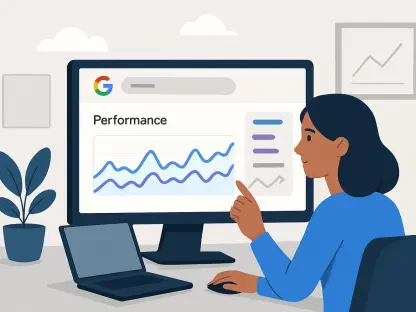Listen to the Article
Today, many companies have turned to data as an essential asset to help them make critical decisions quickly and stay relevant in their chosen field. However, traditional business intelligence (BI) tools can be complex for the average consumer and require specialized knowledge and training. Such capabilities are sometimes out of reach for employees lacking technical skills.
With user-driven BI solutions, staff can autonomously analyze the data and generate reports without needing IT specialists in the background to support them. The democratization of data also allows employees from all parts of the organization, from marketers and salespeople to operations managers to executives, to make informed decisions on the run.
This article explores user-controlled BI, its workings, its benefits for organizations, and the criteria we should consider when selecting the proper platform.
What is Self-Service BI?
Self-service business intelligence tools provide intuitive interfaces, drag-and-drop features, and pre-built templates that enable anyone—from entry-level employees to senior managers—to generate actionable insights without needing to write complex Structured Query Language queries or rely on technical teams.
The core idea behind this innovation is to eliminate the bottlenecks typically caused by centralized data teams. Some of the benefits of these platforms are exploring data at the users’ own pace, the ability to do ad hoc investigations, and making reports without back-and-forth with IT staff. Here is a complete list of user-friendly business intelligence solutions and their advantages for companies:
Accelerates Decision-Making
With the growth of the BI market, traditional intelligence systems have been offering slow reports to consumers, as they need to request this customization from a data team and then wait for them to deliver the report. Self-service BI removes this dependency and enables consumers to access the information they need and create accounts whenever. This brings incredible speed to decision-making processes through the ability to respond quickly to market changes, customer demands, and other opportunities.
Improves Data Accessibility
Self-service BI platforms make data accessible to all sections of the organization. Further, they democratize insights and facilitate enhanced strategizing by enabling easy information exchange between sectors, thus removing silos.
Reduces IT Burden
Traditionally, IT departments had to handle all the requests and generate the reported data. That can lead to a bottleneck and distract tech support from initiatives with more strategic and long-term value. Self-service BI alleviated this burden by allowing business users to generate reports and perform analyses independently. In turn, the IT teams do not have to spend resources optimizing the technical infrastructure and can tackle more complex tasks related to data handling.
Promotes Data-Driven Culture
The more employees have access to metrics, the more they think about how intel can help them make the right decisions. Empowered reporting software helps individuals from different functions quickly investigate insights, put them to good use, discover trends, and deduce new tactics. A data-driven culture nurtures collaboration so that teams can easily spot new opportunities and adopt more informed, statistically-backed plans.
Increases Flexibility and Customization
Self-service BI tools let staff easily create personalized dashboards and reports to meet their needs. The information is customizable with the corporate interface, allowing consumers to tailor the data visualizations and queries to speak to the specific concern or question they are answering. Such a level of customization helps improve decision-making by providing the data in an approach consistent with the user’s needs.
Simplifying Analysis for Everyone
Self-service BI tools are simple to use. The platforms they typically come with will offer the following:
Data Integration
A good user-controlled program easily connects with various sources, such as customer relationship management platforms, databases, and cloud apps. The best ones let you link directly to your company’s data warehouse or internal systems without needing complex setups or IT help.
Drag-and-Drop Functionality
Most solutions offer a drag-and-drop interface to adjust data and create reports quickly. You can customize pre-built templates by dragging and dropping different data fields.
Visualization and Reporting Tools
Once the data is imported, self-service BI tools allow workers to create various visualizations—charts, graphs, heat maps, and tables. These tools help the ones who operate them to quickly extract valuable insight from complex data by making it easy to intuit the data and spot trends.
Collaboration Features
Many autonomous BI platforms also come with built-in collaboration features, allowing teams to collaborate on reports and share insights in real-time. This cooperation enhances communication and ensures everyone is on the same page when making data-driven decisions.
No-Code and Low-Code Features
Self-service BI tools are created for non-technical end users. They generally have no-code or low-code features that let consumers perform advanced analysis without knowledge of programming languages or Structured Query Language. Automatically suggested searches and a visual query builder help those who don’t know any more technical terms.
What to Look for in a Self-Service BI Tool
While searching for an appropriate empowered reporting software for your company, the following few essential features are worth looking at:
Ease of Implementation
What you want is something simple to get up and running. If things work as they should, they should connect smoothly to what you already use, such as Customer Relationship Management systems, databases, and cloud applications. The idea is to be able to start building dashboards and pulling reports without having to call a number of tech support and really complex setups.
Ease of Use
A good BI platform is simple enough that even someone who is not tech-savvy can use it. Find ones with features such as drag and drop, simple query builder, and simple report and visual interface. The twist is that you don’t need to train anyone to be able to create and personalize reports.
Customization and Flexibility
It provides flexibility and customization so that the platform will allow sufficient customization, allowing users to adjust the reports and dashboards to their specific requirements. The variety of data and analysis it should provide should include various visualization options to fit the needs of multiple data and analyses.
Collaboration and Sharing Features
Essential features such as the ability to collaborate on reports and collaborate on dashboards are significant for a self-service BI platform. Consider tools that facilitate ease of sharing visualizations, commenting on reports, and sharing real-time work to realize collective data-driven decisions through collective work.
Scalability
As your organization grows, your BI tool should be able to scale with you. A good self-service BI tool should support an increasing number of consumers, handle larger datasets, and allow for more advanced reporting and analytics capabilities as needed.
Data Governance and Security
While autonomous tools allow people to explore data, they should also ensure everything stays secure. Look for platforms that offer strong security features, like role-based access, data tracking, and audit trails, so your team can access the data safely and responsibly.
The Future of Self-Service BI
Self-service BI is becoming more powerful as organizations consider more advanced data strategies. In the future, more AI-based revolutionary features like predictive analytics and natural language processing should become available and further facilitate intuitive data exploration. With increasing speed, user-friendly business intelligence will enable your organization to become more agile and data-driven and extend its reach to everyone. Adopting empowered reporting software is no longer a luxury but a necessity for any firm aiming to stay competitive in today’s data-driven world.









